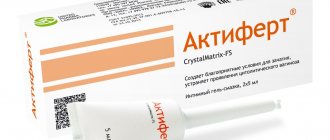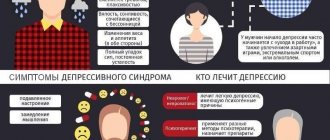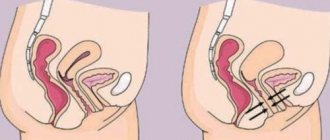Medicines that relieve autoimmune diseases, chronic pain and depression help people live fuller lives. But many have unwanted side effects, including weight gain.
Changing your medication regimen, lowering your dosage, and drinking more water can help people lose the weight that comes with therapy. Gaining excess weight due to medications can be a frustrating problem. Understanding that this is a possible side effect is the first step in dealing with it. There are several ways to lose weight gained from taking medications, but these should be discussed with your doctor first.
Types of medications that cause weight gain
- Antidepressants, including selective serotonin reuptake inhibitors (SSRIs), serotonin-norepinephrine reuptake inhibitors (SNRIs), and tricyclic antidepressants (TCAs).
- Antipsychotics and mood stabilizers.
- Corticosteroids, such as prednisone, methylprednisolone and budesonide.
- Diabetes medications, such as insulin and sulfonylureas.
- Medicines for epilepsy are valproate and gabapentin.
- Beta blockers, such as propranolol and metoprolol.
- Opioids.
Weight gain doesn't always happen instantly. A 2018 study found that people are more likely to gain weight 2-3 years after treatment with antidepressants. When taking antipsychotics, most weight gain occurs in the first 6 months of taking the medication. It is important to note that not everyone gains weight while taking medications that do not cause weight gain as a side effect. However, some antipsychotics are more likely than other drugs to cause weight gain.
4mama
Why do most women gain weight when taking hormonal pills (as birth control or to treat a problem)? Experts say that this happens for two reasons: 1. Incorrect selection of hormonal drugs 2. Increased feeling of hunger What can be counteracted to this? Choose hormonal pills only with a doctor! Most often, women choose hormonal contraceptive drugs on the advice of a friend or based on advertising recommendations. And this is a serious mistake, which very often provokes weight gain. When selecting hormonal contraceptives, it is necessary to take into account the woman’s age, her gynecological and obstetric history (number of children, the presence or absence of abortions and miscarriages), and general health. Therefore, if you do not want to risk your figure and solve the problem of excess weight, choose hormonal contraceptives only with a doctor! Women's health: 10 rules that will help avoid hormonal imbalance Eat right! Many hormonal drugs increase the feeling of hunger because they directly affect metabolism and hormonal levels in the body. Of particular note is the activation of the production of the hunger hormone ghrelin, which has metabolic and endocrine functions. To cope with unwanted hunger, it is very important to eat small and often - 5-6 times a day. This method in nutrition is called grazing, and it really helps control hunger.
When taking hormonal medications, it is necessary to pay special attention to the balance of vitamins and microelements, because hormones contribute to increased consumption and removal of nutrients from the body. Your doctor may advise you to supplement the lack of vitamin C, calcium, zinc, iron, chromium, folic acid, selenium and vitamin E. Women's health: 12 dangerous misconceptions about contraception
What foods should be limited?
It is necessary to completely avoid foods that have a high glycemic index, since such patients have a reduced ability to utilize simple sugars, i.e., all products made from sugar and white flour, as well as beer, are prohibited. You need to be careful with potatoes, semolina and white refined rice. It is also necessary to limit foods rich in saturated fats, such as fatty meats, sausages, fatty dairy products, processed and hard cheeses, and cream. Smoked and fried foods, sausages and semi-finished products will cause great harm to an organism weakened by hormonal drugs. It is worth emphasizing that the body during the period of taking hormonal drugs is especially sensitive to low-quality products and food chemicals - dyes, preservatives, flavors, so you should refrain from sausages, processed foods and bright carbonated drinks.
How is weight gain from medications diagnosed?
Not everyone who gains weight from medication notices it, especially people who were deficient at the start of treatment.
However, the doctor will usually notify the person that they have gained weight since their previous appointment. Your doctor may ask about lifestyle changes to evaluate whether the medication is causing your weight gain. It can be difficult to confirm the connection between weight gain and medications, especially if the weight gain occurs gradually.
In some cases, other lifestyle habits and environmental factors can contribute to weight gain, including supplement use and poor sleep quality.
Local (focal) side effects
The manifestations of focal side effects depend on the intensity of the drug and the location of its application. They can appear in the form of:
- persistent itching of the skin;
- numbness, crawling or tingling sensations (paresthesia);
- chronic acne, inflammation of hair follicles;
- atrophy of the skin, softening and swelling of the skin;
- dilation of small blood vessels, light spots on the skin;
- Excessive body hair, terminal hairs grow in place of vellus hairs.
Skin atrophy
The most common side effect that can occur as a result of treatment with any hormonal ointment is skin atrophy. In this case, irreversible changes affect both the upper layer of the skin (epidermis) and its connective part (dermis).
Already after 3-7 days of treatment, it is possible to notice with the help of a microscope the process of destruction of the upper layer of skin. It becomes thin due to a decrease in the size of epidermal cells, which in turn causes a decrease in metabolic activity in the epidermis.
After prolonged exposure to hormonal ointments, the functions of the cell layers are suppressed, the granular layer becomes very thin or disappears altogether, and the stratum corneum becomes thinner.
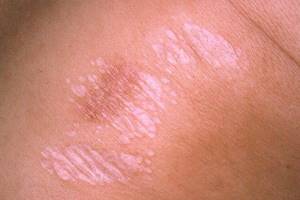
Repeated use of hormonal ointment in the same area causes epidermal thinning and changes in the connective tissue of the dermis. All this leads to transparent, wrinkled and shiny skin, through which the veins are clearly visible.
Loss of connective tissue support for the dermal vasculature results in erythema (abnormal redness), telangiectasia (persistent dilation of small vessels), and microscopic hemorrhage into the skin.
Important! Atrophy is reversible with proper withdrawal of hormonal ointments, but normalization may take several months.
Acneiform rashes and perioral dermatitis
Therapy with hormonal ointments (corticosteroids) in some cases can provoke acne-like skin lesions. The rashes are small and single (monomorphic) inflamed papules and pustules, located mainly on the torso and limbs, less often on the skin of the face.
The anti-inflammatory effect of the hormonal drug initially suppresses inflammatory lesions and erythema, but when it is discontinued, outbreaks of the disease begin.
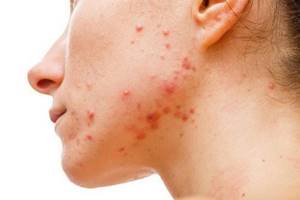
Steroid ointments provoke the formation of comedones by increasing the concentration of free fatty acids in the superficial lipid layer of the skin and increasing the number of bacteria in the hair canal.
Long-term use of strong hormonal ointments can also lead to perioral dermatitis. The rash occurs around the mouth and consists of follicular papules and pustules on an erythematous base (abnormally reddened skin).
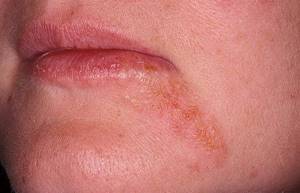
Often, after hormonal treatment for eczema or other skin pathology, rashes appear around the mouth. As a result, the patient begins to use steroid ointment to treat this rash, considering it a symptom of eczema or an allergy, without even suspecting that this is a side effect from previous therapy. Often after stopping the ointment, rashes around the mouth become even worse.
Don't spread the disease! Treat oral dermatitis only with medications prescribed by your doctor.
Why do some medications cause weight gain?

Antidepressants may cause mood changes, leading to increased appetite. Antipsychotic drugs stimulate appetite and may cause food cravings. Other side effects of some medications, such as shortness of breath, make it difficult to exercise, which can lead to weight gain.
Classification of hormonal ointments
Hormone-based medications are divided into four groups based on their potency.
Class 1 ointments have a weak effect and are intended for the treatment of children under two years of age, pregnant women and the elimination of inflammatory processes in the area of skin folds, on the face and neck. These include:
- 0.0025% fluocinolone acetonide;
- hydrocortisone cream Lokoid;
- 0.5% prednisolone ointment.
Moderate-acting hormonal ointments of class 2 are used if there is no positive effect from the action of class 1 agents. also used to treat severe inflammatory processes:
- Clobetasone butyrate 0.05% cream or ointment;
- Ftoderm;
- Cynacort;
- Afloderm.
Class 3 drugs have a strong effect. They are used if it is necessary to relieve an acute inflammatory process or for chronic dermatoses. They are used to treat eczema. They can only be used as prescribed by a doctor and under his supervision. They have a strong effect:
- Akriderm;
- Apudein;
- Flukrt;
- Cutivate;
- Advantan;
- Elokom.
Class 4 hormonal ointments have the highest effect . They are distinguished by their strongest action, maximum depth of penetration and pronounced side effects. Such drugs are prescribed only as a last resort, when the above medications have not coped with the problem. These include:
- Dermovate;
- 0.1% galcinonide cream;
- 0.3% diflucortolonavalerate fatty cream or ointment.
They are used under the strict supervision of a doctor.
Systemic side effects
After treatment with external hormonal ointments, systemic side effects (affecting internal organs and systems) occur less frequently, mainly due to the treatment of sensitive skin or inflamed surfaces with potent agents. They appear in the form:
- adrenal insufficiency;
- slowing or stopping the child's growth;
- small hemorrhages under the skin (petechiae);
- decreased bone mass (osteoporosis), bone fracture;
- clouding of the lens of the eye, intraocular pressure;
- mental disorders;
- metabolic syndrome.
Attention! Irrational use of topical steroids will certainly lead to the development of local and systemic side effects.
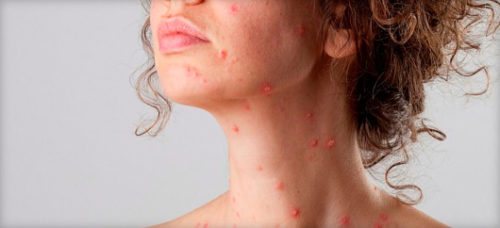
Suppression of adrenal cortex functions
The adrenal glands are combined with the hypothalamus (a section of the diencephalon, connected to the central nervous system) and the pituitary gland (the endocrine gland is located at the base of the brain, responsible for metabolism, growth and development of the body).
Together, these organs form the HPA axis (hypothalamic-pituitary-adrenal axis), which in a healthy state allows the body to adapt to stress, anxiety and problems. As soon as the HPA axis stops functioning normally for any reason, a person falls into a prolonged state of stress.
It has been found that the functioning of the adrenal glands can be suppressed by all steroid-based ointments; for this it is enough:
- Increase the dose of a moderately powerful steroid (Cinacort, Prednisolone, Afloderm).
- Use of strong steroids (Dermovate, Advantan) in minimal quantities.
- Applying hormonal ointment to sensitive areas of the body (face, neck, armpits, groin area, especially in children with atopic dermatitis).
- Using hormonal ointments under a bandage.
- Treatment with ointments with a high content of hormones (Ftorokort, Afloderm).
- Application of hormonal ointments on large areas of skin.
The following ointments have an increased ability to suppress adrenal function: Betamethasone and Clobetasol. In this case, the most powerful external preparations of the glucocorticoid group are named.
Long-term use or application of Clobetasol to large areas of the skin causes suppression of the functions of the adrenal cortex.
The use of Betamethasone in quantities exceeding the permissible norm (more than 50 g/week) reduces the level of cortisol in plasma. After which, patients experience low blood pressure, muscle fatigue, lack of appetite and skin hyperpigmentation.
Note! The risk of developing these complications increases in children, especially when it comes to using an ointment under an occlusive dressing, which can be a diaper or a regular diaper.
Infants have a high skin surface area to body volume ratio and are therefore at high risk for HPA axis suppression due to systemic absorption of glucocorticosteroids.
The following video will tell you about the rules for using hormonal ointments in children, in particular with atopic dermatitis:
Note! In dermatological practice, there is also information about iatrogenic Cushing's syndrome (symptoms: obesity, increased blood pressure, osteoporosis, muscle weakness), Addison's crisis (adrenal cortex insufficiency), decreased bone growth and death resulting from long-term use of glucocorticoids.
Tachyphylaxis
Tachyphylaxis (lack of response to repeated treatment) is characterized by a decrease in the effectiveness of the properties of hormonal ointments with prolonged treatment.
This usually occurs in people with psoriasis, and may involve patients who do not comply with the treatment prescribed by the dermatologist, or the inability of the steroid ointment used to completely cope with the disease. Cancellation of a hormonal external agent is accompanied by an outbreak of the disease.
There are many medications and ointments for psoriasis. How to determine which product is better?
As skin tissue becomes less sensitive, stronger drugs are required to achieve the desired effect, which in turn lead to more serious consequences.
Steroid addiction and withdrawal syndrome
It is known that steroid dependence occurs after the unintentional use of strong hormonal ointments. Its manifestations are most often visible on the face.
Patients with steroid dependence have acne, rosacea (pink acne), perioral dermatitis, or telangiectasia (persistent vasodilatation). They cannot stop using the ointments for fear of a worse outbreak of the disease.
In dermatology, the stages of exposure to hormonal topical agents on the skin are described as follows:
- At the beginning of treatment, the appearance of the pustules improves, itching and erythema disappear, and the skin gradually clears.
- Continued use of hormonal ointment results in local immunosuppression (immune suppression), an increase in areas of skin rashes, and the appearance of spider veins.
- An attempt to stop treatment causes outbreaks of itching, redness and swelling of the skin, and an increase in the affected areas.
The third point contains signs of hormonal ointment withdrawal syndrome. The greatest evil that can cause psychological trauma to a person and even lead to death.
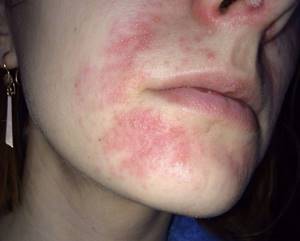
In this condition, abnormal redness of the skin, with small pimples and pustules, is considered normal. Usually, if treatment was carried out on the face, severe pain appears in the chin area and near the ears. In addition to pain, itching occurs periodically.







